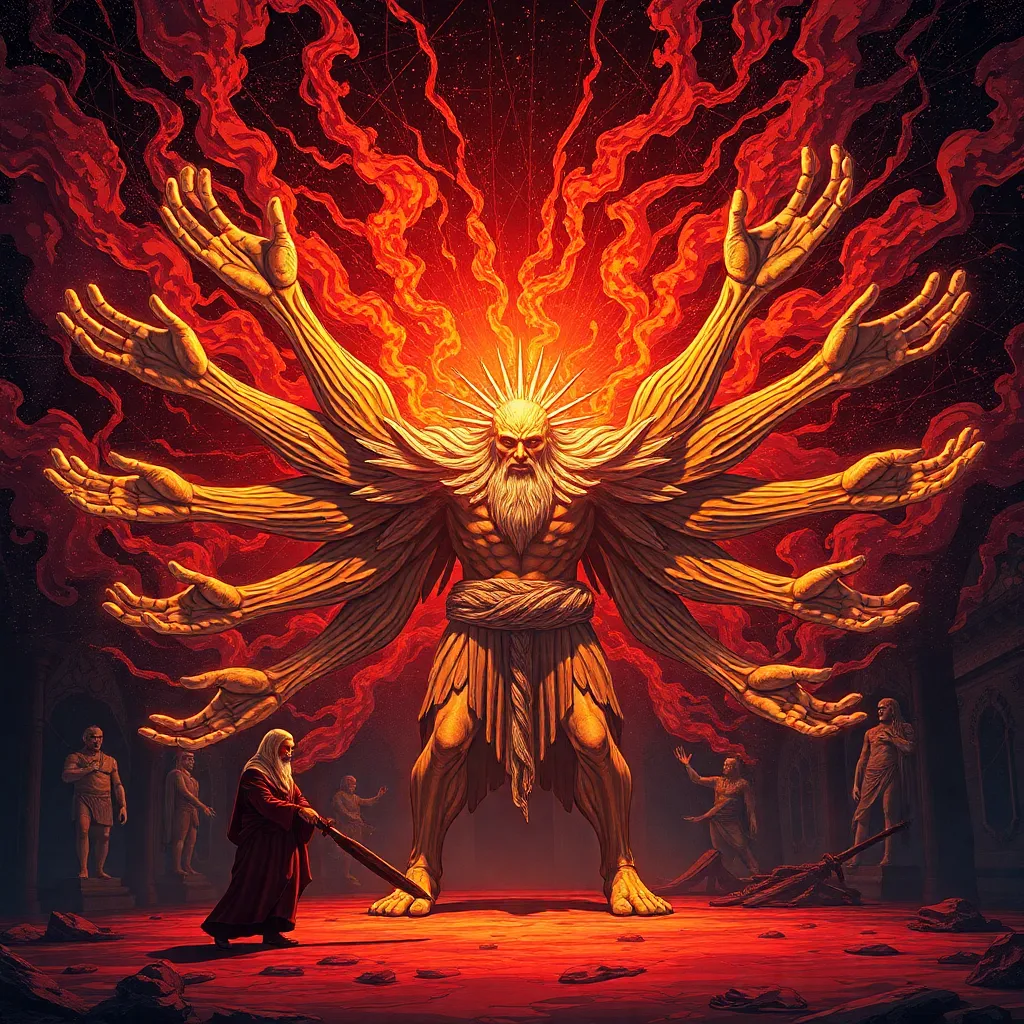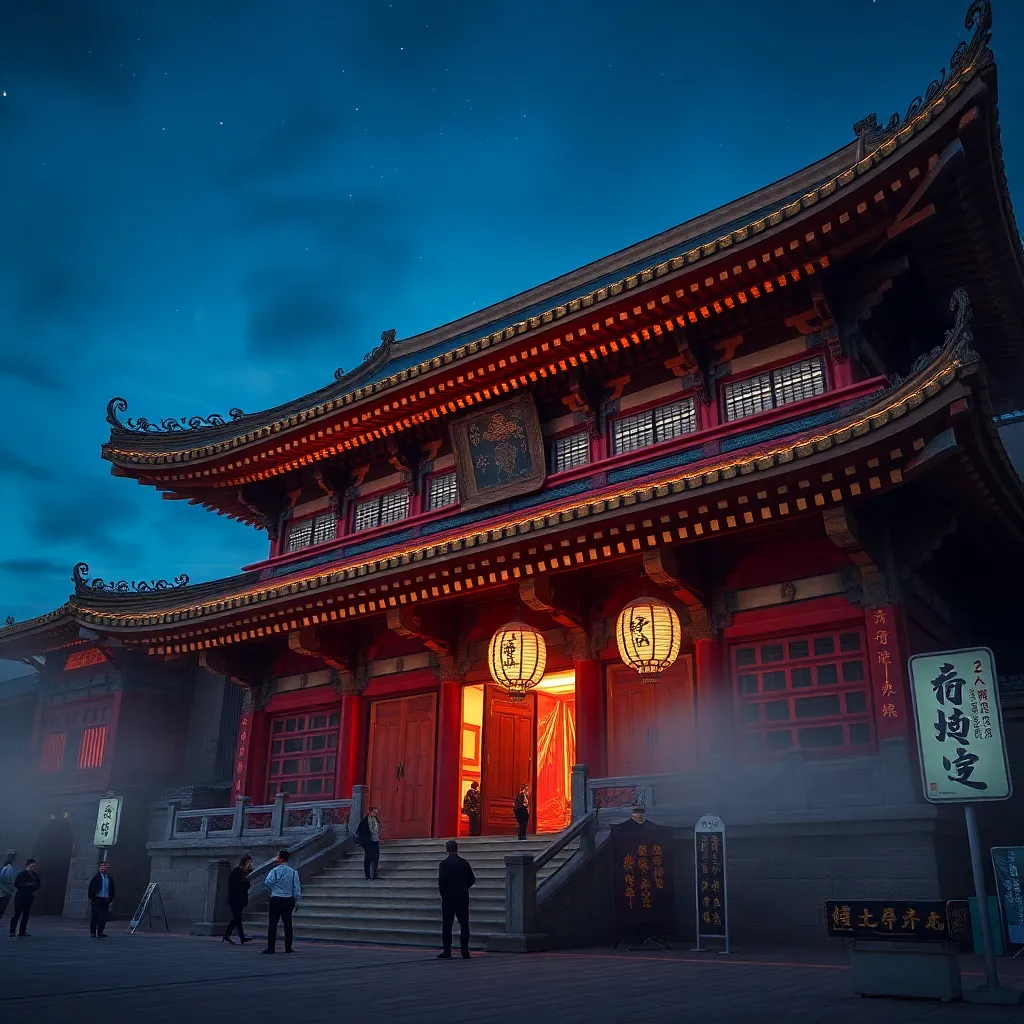The Hundred-Handed Giants as Archetypes: Exploring their Universal Significance
I. Introduction
The Hundred-Handed Giants, known as the Hecatoncheires in Greek mythology, are fascinating figures that capture the imagination with their extraordinary physical attributes and symbolic power. These mythological beings, Briareus, Gyges, and Cottus, embody complex themes of strength, chaos, and duality. This article aims to explore their archetypal significance, examining their representation in various cultures and their relevance to contemporary society.
II. Mythological Context of the Hundred-Handed Giants
The origins of the Hundred-Handed Giants lie deep within Greek mythology. They are described as monstrous beings with a hundred hands and fifty heads, born from Gaia and Uranus. Their most notable figures include:
- Briareus: Often depicted as the most powerful of the trio, he played a pivotal role in the Titanomachy.
- Gyges: Known for his immense strength, he symbolizes the raw power of nature.
- Cottus: A figure representing destruction, often seen as a harbinger of chaos.
In addition to their Greek origins, the Hundred-Handed Giants have parallels in various mythologies around the world. For example, in Hindu mythology, the multi-armed deities such as Durga represent similar concepts of power and chaos.
During the Titanomachy, the Hundred-Handed Giants sided with Zeus against the Titans, showcasing their importance in the struggle between order and chaos. Their enormous strength and unique abilities were crucial in overthrowing the Titans and establishing a new order among the gods.
III. Archetypal Characteristics of the Hundred-Handed Giants
The Hundred-Handed Giants embody several archetypal characteristics that resonate across cultures:
- Symbolism of strength and power: Their hundred hands symbolize unparalleled strength, suggesting a force capable of influencing the world.
- Representation of chaos versus order: They are often seen as chaotic forces that can disrupt the established order, yet they also play crucial roles in restoring balance.
- Duality of their nature: The Giants serve as creators and destroyers, embodying the duality of existence where strength can lead to both creation and destruction.
IV. The Hundred-Handed Giants in Literature and Art
The Hundred-Handed Giants have been depicted in various forms of literature and art throughout history. In ancient texts, they are often portrayed as fearsome warriors with immense capabilities. Modern interpretations have seen these figures adapted into various narratives:
- Literary References: Their presence is felt in works ranging from classical literature to contemporary fantasy, where they represent the struggle between good and evil.
- Visual Arts: Artists have depicted the Giants in paintings and sculptures, showcasing their terrifying yet awe-inspiring forms.
- Popular Culture: Movies and video games have also embraced the Hecatoncheires, often portraying them as formidable adversaries or allies.
Specific works that feature the Hundred-Handed Giants often emphasize their strength and chaotic nature, reflecting the timeless fascination with these archetypal figures.
V. Psychological Interpretation: Jungian Analysis
From a psychological perspective, the Hundred-Handed Giants can be analyzed through the lens of Carl Jung’s theory of the collective unconscious. They symbolize:
- The collective unconscious: Representing shared human experiences and instincts, the Giants embody the archetypes that reside within us all.
- Archetypal themes: Their stories resonate with themes of struggle, power, and the duality of human nature.
- Multiplicity in identity: The Hundred-Handed Giants exemplify the complexity of identity, where multiple facets can coexist within a single being.
VI. Cultural Impact and Modern Relevance
The archetype of the Hundred-Handed Giants continues to resonate in contemporary society. Their themes can be seen in various aspects of modern life:
- Modern Heroes and Anti-Heroes: Characters in literature and film often reflect the traits of the Hundred-Handed Giants, showcasing the struggle between power and responsibility.
- Discussions of Power: The Giants provoke discussions about the nature of power, its potential for both creation and destruction, and the ethical implications of wielding such power.
- Responsibility: The duality of the Giants’ nature serves as a reminder of the responsibility that comes with strength.
VII. Comparative Analysis with Other Archetypes
When comparing the Hundred-Handed Giants to other mythological figures, several similarities and differences arise:
- Similarities: Like the Cyclopes and Titans, the Hundred-Handed Giants represent immense strength and chaos.
- Differences: Unlike the Cyclopes, who are often portrayed as singularly focused, the Giants’ multiplicity signifies a broader range of human experience.
- Universality: Their themes of power, chaos, and duality are universal, appearing across various cultures and mythologies.
VIII. Conclusion
In conclusion, the Hundred-Handed Giants serve as significant archetypes that offer valuable insights into human nature and mythology. Their representation of strength, chaos, and duality resonates across cultures, making them timeless figures in our understanding of power and responsibility. As we continue to explore and appreciate such mythological figures, we uncover deeper truths about ourselves and the world around us.
These giants remind us of the complexities of existence and the delicate balance between creation and destruction, urging us to reflect on our own lives and the archetypal forces that shape our experiences.



